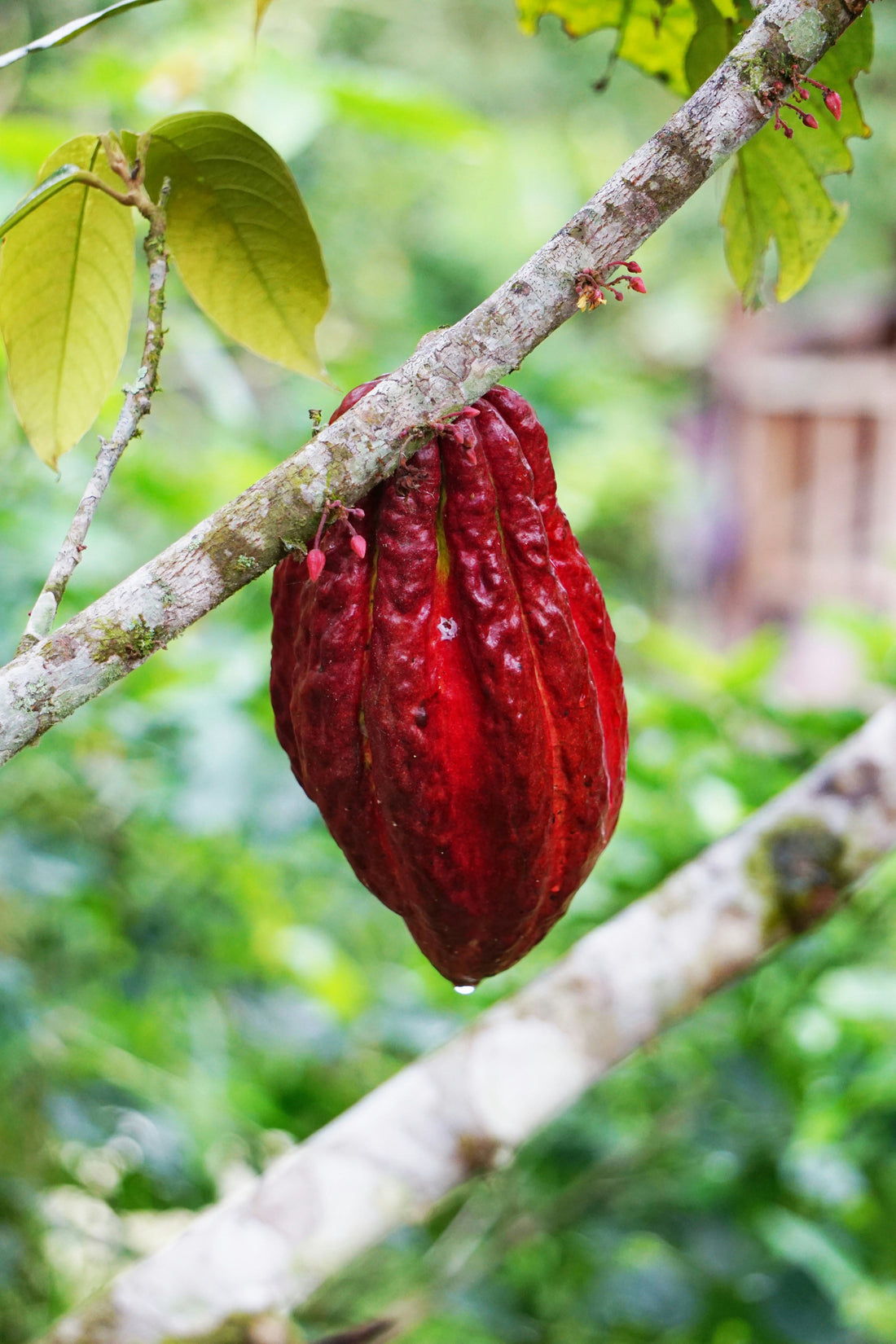
Exploring the Terroir of Chocolate: How the Origins of Cocoa Beans Influence Flavor
Share
When we talk about wine, the term “terroir” is often brought up. It is a French term used to describe the unique characteristics of a region that influence the flavor of the wine—things like soil, climate, and geography. Entire books have been written on the subject, but did you know that “terroir” also plays a huge role in the flavor profile of chocolate?
Chocolate, like wine, is derived from a natural product: the cacao bean and just like grapes, the flavors in cacao beans are heavily influenced by the environment in which they grow. This makes understanding the terroir of chocolate a fascinating journey for any chocolate lover or artisan chocolate maker. So, let’s dive into the world of cacao terroir and how it shapes the taste of your favorite chocolate treats.
The Origins of Cacao: Where the Magic Begins
Cacao trees thrive in tropical climates, specifically in regions within 20 degrees of the Equator. Countries such as Venezuela, Ecuador, Peru, Ghana, and Madagascar are renowned for producing cacao with distinctive flavors that are influenced by their unique ecosystems.
Just like wine vineyards, cacao farms are deeply connected to their environment. The soil's mineral content, the amount of rainfall, temperature fluctuations, and even the elevation all affect how the cacao beans grow. All these factors can alter the chemical composition of the beans, which ultimately impacts the chocolate’s flavor.
You might be familiar with the basic flavor categories in chocolate—bitter, sweet, fruity, nutty—but terroir introduces a wide spectrum of complex and nuanced flavors that are a direct result of where the cacao was grown. This is the “terroir” of cacao.
For example:
-Madagascar cacao, often has a bright, tangy, and fruity flavor with notes of citrus and red berries, thanks to the rich volcanic soils and tropical climate of the island.
- Ecuadorian cacao, known for its fine Arriba Nacional beans, is often described as having floral, herbal, and slightly nutty flavors due to the humid, high-altitude regions in which it grows.
- Venezuelan cacao, is famous for its rich, creamy notes with hints of honey, tobacco, and a subtle sweetness. The varied climate and soil types found in Venezuela's cacao-growing regions add complexity to the beans.
Even the way cacao is fermented and processed can emphasize or change the terroir’s impact on flavor, making each chocolate creation a unique reflection of its origin.
Why Terroir Matters to Artisan Chocolate Makers
For artisan chocolate makers, understanding the terroir of cacao beans is essential to creating high-quality, distinctive chocolates. By sourcing beans from specific regions, they can craft chocolates that highlight the unique flavors inherent to that terroir. This is a stark contrast to mass-produced chocolates that often use blends of beans from multiple sources, leading to a more uniform but less flavorful result.
At our chocolate shop, we focus on bean-to-bar production, where we carefully select our cacao beans based on their origin and the distinct flavor profiles they offer. At The Alaskan Chocolate Company we carefully select our beans from various Cacao Barry lines. They work closely with farmers all around the regions surrounding the equator to assure the protection of our rain forest, our bees and our farmers. We not only celebrate the terroir of chocolate but also support the communities that produce these incredible beans.
How to Explore Chocolate Terroir
If you’re a chocolate connoisseur, the best way to explore the terroir of chocolate is to taste different types of single-origin chocolate. Look for bars that highlight specific regions and experiment with flavors from different parts of the world. Each bar is like a flavor map, offering a glimpse into the land where the cacao was grown.
When tasting single-origin chocolate, take note of the subtle flavors—do you taste floral notes? Earthiness? Fruity acidity? These are all the results of the terroir influencing the cacao.
The Future of Terroir in Chocolate
As the demand for high-quality, ethically sourced chocolate continues to grow, there is a renewed focus on understanding and preserving the terroir of cacao. Sustainable farming practices and fair trade certifications are helping farmers improve their yields while protecting the environment and maintaining the unique flavors of their regions. With increased awareness, chocolate lovers are becoming more conscious of the importance of terroir in their chocolate choices, supporting both quality and sustainability.
Final Thoughts
Just like wine, chocolate is more than just a treat—it’s an experience. The terroir of cacao beans gives each chocolate its own story and flavor journey, shaped by the land, climate, and care taken during cultivation. Whether you’re savoring a fruity bar from Madagascar or a creamy, rich chocolate from Venezuela, each bite offers a connection to the place where it was grown.
At The Alaskan Chocolate Company we believe that understanding and appreciating the terroir of chocolate is part of the joy of enjoying artisanal chocolate. We hope you’ll continue to explore and savor the unique flavors that each region brings to the table.
